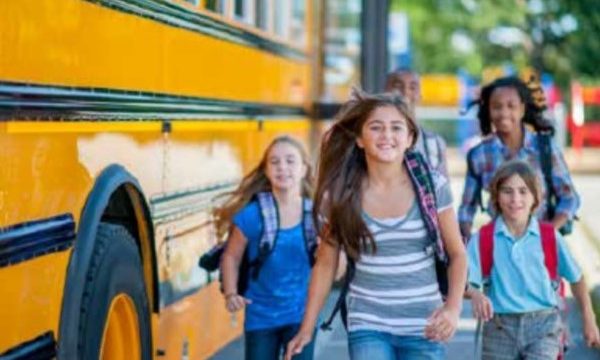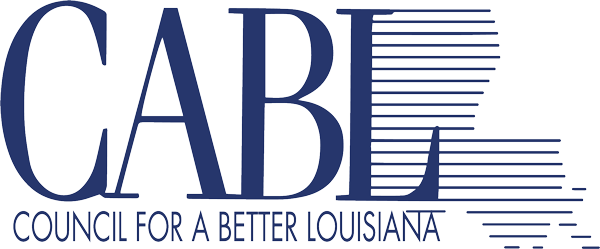
The COVID-19 crisis has dashed Louisiana’s economy, crippled many businesses, and disrupted the lives of every citizen of our state. It has also had a significant impact on all aspects of education. There are many things education and school leaders are doing to address the issues facing our students in this unprecedented time. CABL has outlined its priorities in early education, K-12 education, and postsecondary education. Today a look at child care and education opportunities for our youngest children.
Child care and early education are critical not just to the formation and development of our kids, but also to the reopening of the economy and getting people back to work. Much of our workforce is diminished if quality child care options are not available to working families. To that end, CABL has developed these priorities in early education:
- As the impacts of COVID-19 linger, we must ensure that child care centers are able to operate at a capacity that supports Phase I reopening of the economy now that that is set to begin. These centers are critical to the reopening of businesses as workers will need quality settings for their children as they return to work. To ensure the child care sector is able to accommodate this need, the state should offer ongoing guidance to provide for the safety of child care staff and children, necessary PPE for all, and modified instruction options for early education teachers.
- Louisiana should continue to provide subsidies to assist low-income workers in placing their children in high-quality child care settings. In response to the COVID crisis, child care centers that remained open were required to enact a number of policies and procedures to protect children and staff. This increased the cost of providing the service and the state responded with additional funding through the CARES Act to subsidize children of essential workers to enroll in child care. Through the recovery period, these subsidies should be continued with consideration given to expanding them to include those looking for work.
- The child care sector is a critical component in the business recovery of the state and as such will require appropriate access to financial and technical support to meet the needs of a re-opening economy. Public schools and public pre-k programs have access to public funding which has helped keep them whole through the current crisis. To date that has not been cut. Child care for young children is primarily a private-sector initiative and as such has been severely impacted by the severe job losses across the economy. At the same time, it provides a service that is vital to the state’s economic recovery as working parents return to their jobs. Continued investment in early education and other public and private financial support is needed to ensure the return of the state’s workforce.
Tomorrow, K-12 education.
CABL Education Priorities in Response to COVID-19: K-12
The COVID-19 crisis has dashed Louisiana’s economy, crippled many businesses, and disrupted the lives of every citizen of our state. It has also had a significant impact on all aspects of education. There are many things education and school leaders are doing to address the issues facing our students in this unprecedented time. CABL has outlined its priorities in early education, K-12 education, and postsecondary education. Today a look at K-12 education.
We have seen disruptions in public education before as a result of hurricanes and severe floods, but never have we experienced school closures on a statewide scale with literally every student, teacher, and family impacted. Students have lost the equivalent of half-a-semester of in-person instruction heading into a summer break where we know an additional loss of learning occurs. Ensuring that our students get the help they need to get back on track will require extraordinary planning, strong implementation, and persistent oversight. To that end, CABL has developed these priorities in K-12 education:
- In the short-term, every district should have a continuing learning plan in place that includes daily outreach and communication with students and continued delivery of nutritious meals to students in need.
- Each district should have a plan in place to ensure the health and safety of returning students, educators, and school staff. This should include appropriate sanitizing protocols, distancing requirements, PPEs, and social and emotional support where needed.
- Districts should have a technology plan to allow them to quickly access federal dollars that will be available to support online and distance learning and meet the state goal of having a 1:1 ratio of laptops or tablets for students. The plan should include appropriate training for teachers in online and distance learning best practices. Where access to broadband services is not readily available, schools should turn to other resources to assist in learning such as instructional programs, teacher training in online instruction, and technology assistance from Louisiana Public Broadcasting.
- There is no question that despite home schooling and other efforts, students have lost ground through school closures and that will likely increase over the summer. Every district should have a plan to mitigate the learning loss that has occurred, including individual learning plans for students, and these should be communicated to parents and the public. Mitigation plans could include summer schools, early start of school, abbreviated breaks, extended days during the school year, or other means to help provide remediation to students of greatest need.
- Districts should have a plan in place to assess students as early as possible to see where they stand and publicly communicate the results so parents, citizens, and stakeholders understand the challenges and needs of schools in moving students back to their expected levels of learning.
- School leaders should be transparent. All districts should be required to report how many students they are touching on a daily basis, how many devices are in their hands to facilitate learning, and what they are doing to identify students who are behind and need to catch up. Later we need to understand just how much loss of learning has occurred, what programs and offerings are in place to help move students up, and lessons learned from their initial response to school closures in the spring. Our accountability system may be on hold for now, but accountability itself cannot be.
- Schools and districts need contingency plans in place in the event of another outbreak. The fact that the corona virus struck hard during the spring does not mean it will not return in the fall or winter. Schools need to build on their experience and ensure that they have the tools, trained staffing, and overall flexibility to pivot quickly in the event that classrooms are once again required to close.
Tomorrow, postsecondary education.
